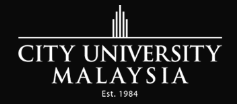So You Wanna Be a Fashion Designer
by StudyMalaysia.com on April 14, 2015 | Top Stories, Career Guide
The job of a fashion designer
Fashion designers create and design clothing, footwear and accessories ranging from casual wear to evening wear, as well as corporate working apparel to sportswear. Usually, they would choose to specialise in a particular type of clothing such as women's apparel, menswear or children's wear.
 Fashion designers are responsible for coming up with the initial concept of the design and having to see to the finished product. This involves sketching the designs - often with the use of computers - selecting colour schemes, material types and styling accessories. For the prototype design, fashion designers usually have to work with other designers or team members.
Fashion designers are responsible for coming up with the initial concept of the design and having to see to the finished product. This involves sketching the designs - often with the use of computers - selecting colour schemes, material types and styling accessories. For the prototype design, fashion designers usually have to work with other designers or team members.
Some fashion designers have the responsibility of coordinating the entire production process, working with suppliers and factory staff, and overseeing production costs. Others may have the task of taking the designs to market, working with merchandisers and retailers.
Fashion designers need to keep up with the latest fashion and consumer trends through magazines and by attending trade and fashion shows.
Is this job for you?
Do you have a passion for fashion? Do you have a natural flair for fashion design? Do you have a keen eye for colours, textures and shapes? If you answered ‘yes' to all these questions, read on to find out if you have these other interests as well to be suited for a career in fashion designing.
The interest code for this career is AER (Artistic, Enterprising and Realistic).
- Artistic - Artistic occupations frequently involve working with forms, designs and patterns. They often require self-expression and the work can be done without following a clear set of rules.
- Enterprising - Enterprising occupations frequently involve starting up and carrying out projects. These occupations can involve leading people and making many decisions. Sometimes they require risk taking and often deal with business.
- Realistic - Realistic occupations frequently involve work activities that include practical, hands-on problems and solutions. They often deal with plants, animals, and real-world materials like wood, tools, and machinery. Many of the occupations require working outside, and do not involve a lot of paperwork or working closely with others.
Work styles
While talent and creativity can help you to launch your career as a fashion designer, having the following work styles would greatly help you to become successful.
- Having a cooperative attitude and being able to work well with other designers, as well as other staff such as pattern makers, sample-makers and merchandisers
- Being thorough and careful in completing work tasks
- Able to lead and direct others to put together the finished product
- Willing to take on the challenges of the job
- Able to work effectively while facing highly stressful situations
- Being open to changes in the workplace and adapting to them
Work values
Fashion designers place importance on being able to work independently, making their own decisions. This gives them a feeling of accomplishment when results are achieved, making it all worth it for them. A work environment that offers job security and good working conditions is another value that fashion designers seek.
Work environment
In-house fashion designers are usually full-time workers with regular work hours. However, fashion designers are expected to put in long working hours when they have to meet production deadlines and to prepare for fashion shows.
As for fashion designers who work as freelancers, their work hours would depend on their clients' schedules and deadlines. They also tend to work longer hours.
Places of Employment
Many fashion designers are employed by clothing manufacturers, wholesalers and fashion houses as in-house designers. Some fashion designers opt to work on their own as freelancers accepting assignments from clients on a contract basis.
Job Entry Requirement
Although it is possible to enter the field of fashion designing without a formal education, the career progression is likely to take a longer time as you would begin at lower responsibility positions before moving on to be an assistant designer and eventually to the position of a designer.
As jobs in the fashion industry is highly competitive, it is advisable to get a diploma in fashion design or a related field such as art, creative design and textile. Having a bachelor's degree in fashion design or fashion merchandising would be an advantage as you would gain essential knowledge to the industry such as design strategies and techniques, computer-aided design, advanced pattern making, art history and business marketing strategies. Taking a degree course also helps you to build your portfolio and to gain initial experience in the fashion industry through the internship programme.
Education and Training Qualifications:
Find out where you can pursue a certificate, diploma, or a bachelor's degree in fashion design on our website.
Watch this video to find out what it's like a day in the life of a fashion designer.
You can also check out this video on an independent fashion designer's daily work tasks.
References:
- Fashion Designer Career
- Fashion Designer: Career Definition, Occupational Outlook, and Education Prerequisites
- Fashion Designers: Occupational Outlook Handbook
- My Next Move
You May Also Be Interested In...
Are you an SPM/STPM student applying to IPTA for the 2017/18 academic session?
![Are you an SPM/STPM student applying to IPTA for the 2017/18 academic session? - StudyMalaysia.com]() Here are some important things every SPM/STPM students who are applyin...
Here are some important things every SPM/STPM students who are applyin...Education in Malaysia sixty-two years on
![Education in Malaysia sixty-two years on - StudyMalaysia.com]() Happy Merdeka! This National Day, we look at how far the education sce...
Happy Merdeka! This National Day, we look at how far the education sce...Covid-19 Alert: Malaysia bars entry to long-terms pass holders from high-risk countries
![Covid-19 Alert: Malaysia bars entry to long-terms pass holders from high-risk countries - StudyMalaysia.com]() Beginning Monday, 7 September 2020, Malaysia will impose an entry ban ...
Beginning Monday, 7 September 2020, Malaysia will impose an entry ban ...“为何您应该修读物流管理课程”- 齐藤 (Saito) 给予您答案
![“为何您应该修读物流管理课程”- 齐藤 (Saito) 给予您答案 - StudyMalaysia.com]() 物流业的未来发展是一片光明的,尤其是在马来西亚�...
物流业的未来发展是一片光明的,尤其是在马来西亚�...�How to begin your search for the right course after SPM (Updated)
![�How to begin your search for the right course after SPM (Updated) - StudyMalaysia.com]() Now that SPM results are out, you may be wondering how to choose a sui...
Now that SPM results are out, you may be wondering how to choose a sui...Finished SPM and thinking of becoming a teacher?
![Finished SPM and thinking of becoming a teacher? - StudyMalaysia.com]() Are you patient, organised and resourceful? Do you enjoy helping child...
Are you patient, organised and resourceful? Do you enjoy helping child...






























